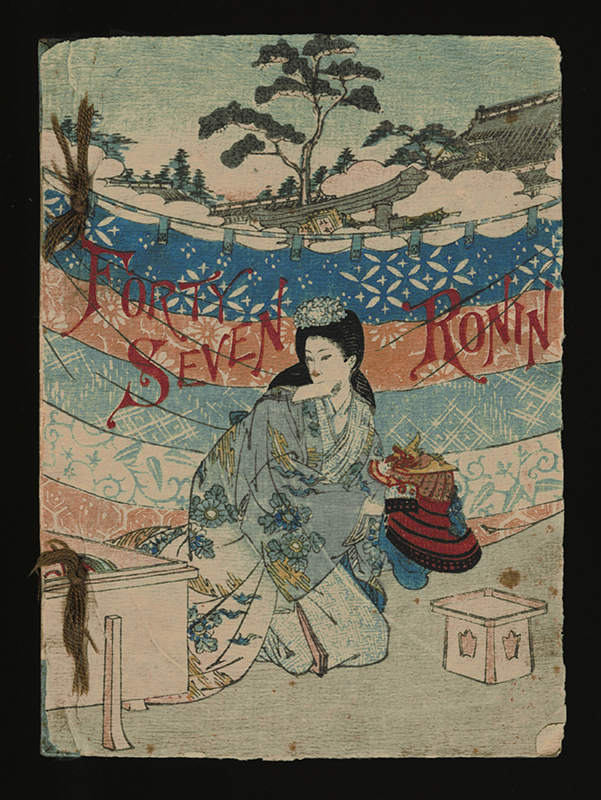
19th, 20th & 21st Century Fine Prints
707-546-7352 · fax 707-546-7924 · web: www.annexgalleries.com · email: artannex@aol.com
Forty-Seven Ronin (Chushingura) by Kichigoro Miyazaki







Forty-Seven Ronin (Chushingura)
Kichigoro Miyazaki
Forty-Seven Ronin (Chushingura)
An account of the Genroku Ako Incident, commonly known as "Chushingura" (Tale of the Loyal Retainers), as written by Kichigiro Miyazaki. It is a chirimen-bon, which are books made with a soft, crepe-like paper called chirimen-gami. The word "chirimen" refers to a style of textile used for some kimono: wrinkled, expandable, and lightweight yet durable; hence the term applied to the paper used in these books, which mimics the fabric.
The chirimen-bon style book, as well as the chirimen-ukiyoe print, was developed in 1886 by Takejiro Hasegawa not long after trade reopened between Japan and the West. Originally intended to be used for educational purposes for children, the book style rapidly gained admiration by Westerners, including artists such as Van Gogh, and were published in French, Portuguese, German, and Spanish, in addition to English. Forty-Seven Ronin was published by noted publisher Tanaka Umesaburo, who helped to popularize the chirimen-bon style books with his employment of fine printers and writers, and with the retelling of historical events. Forty-Seven Ronin is considered among the finest of its time. Included in this copy is the larger-format print of the story's finale: a dramatic battle scene, printed on a full sheet, folded, and partially sewn into the book's binding.
The story of the "Genroku Ako Incident", known to Westerners as the tale of the Forty-Seven Ronin, takes place in the early 17th century in Japan's Ako province. It tells the saga of the feudal lord Takuminokami Asano and his loyal retainers, the forty-seven ronin. The victim of constant mistreatment by high-ranking shogunate member Kozukenosuke Kira, Asano goes to Kira's castle and stabs him, but Kira survives. Kira orders Asano to commit Harakiri (suicide by disembowelment) for unlawfully carrying a weapon onto his estate, and then confiscates Asano's property. Asano's faithful chief councillor, Oishi Kuranosuke, then assembles Asano's loyal retainers who plot to avenge their late master. Through trickery, Oishi manages to be allowed into Kira's castle; soon, he sneaks in the rest of the men, and they raid the castle on a cold winter night, killing Kira. Once the deed has been finished, the shogunate orders the men to commit Hasakiri which they do after visiting Asano's grave.
An in-depth history of the chirimen-bon, titled "Wrinkles in Time: Crepe-Paper Books in Watson Library", written by Yukari Hayashida can be found on the Metropolitan Museum's blog.





